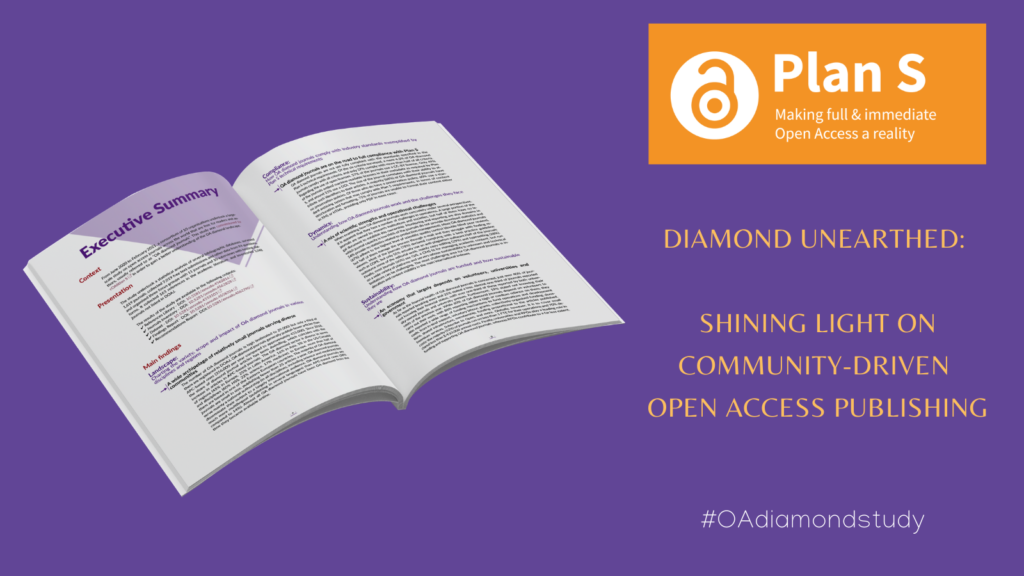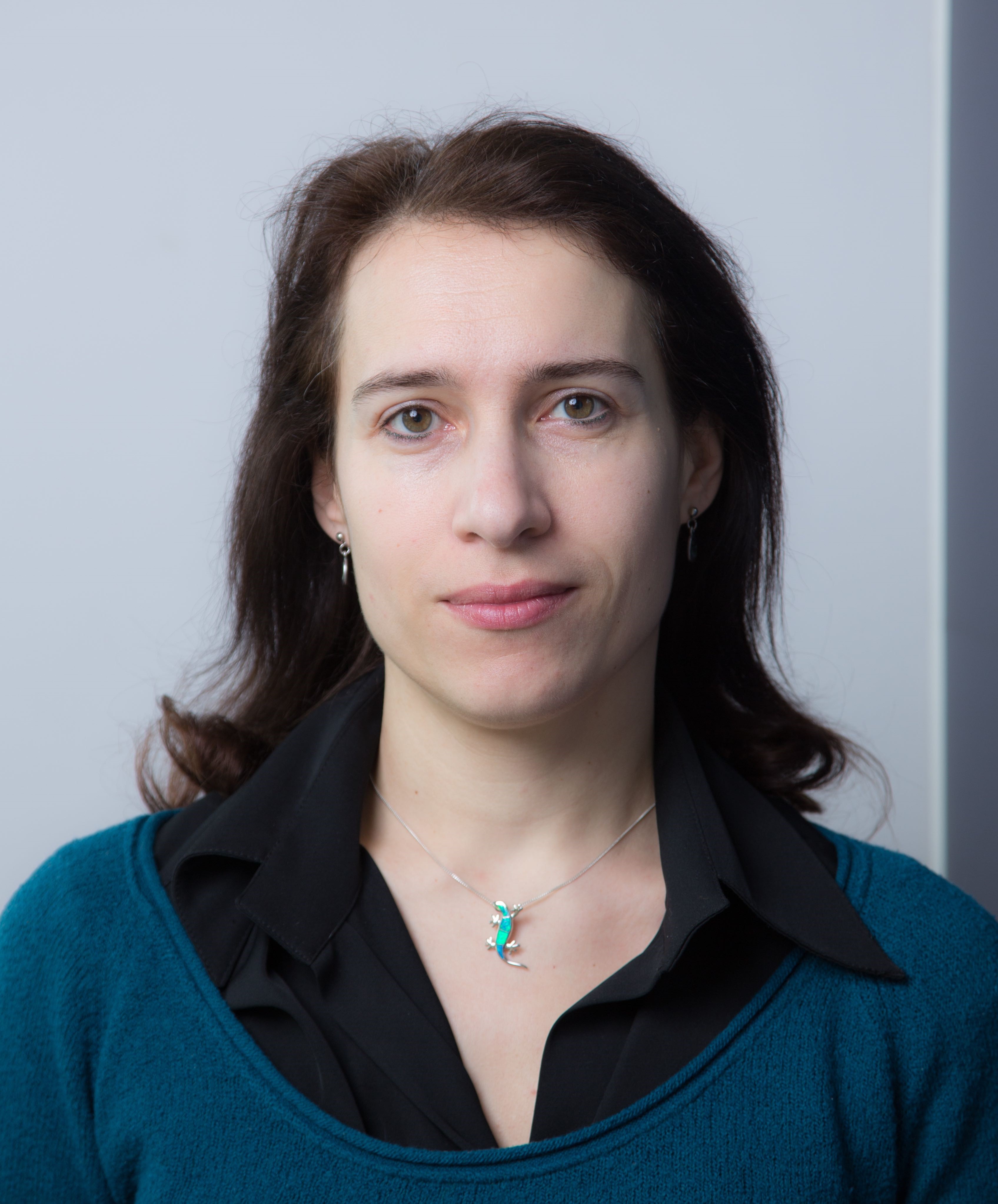Go back
Protecting High-Quality Scholarship through Fair Open Access: Reflections on the OA Diamond Journals Study
13/05/2021
The OA Diamond Journals Study Report is a fantastic resource for anybody interested in open Access, and particularly for researchers and scholarly societies scrambling for solutions to the significant concerns arising in relation to implementing Open Access on a large scale. I have been involved in countless such discussions over the last two decades. Researchers generally agree on the advantages and importance of making their work as widely accessible as possible. At the same time, they are concerned with the implications for, e.g., scholarly societies overseeing journals whose income often depends on subscription-based agreements with commercial or academic publishers. Many researchers are not in a position to cover author processing charges and may therefore be shut out of the publishing system (and therefore of academia!). In addition, researchers worry about the authors’ rights over their work, particularly in cases where research depends on data and sources protected by intellectual property regimes or sensitivity concerns, or where research is likely to be re-used out of context and in ways that authors would strongly disapprove of. Finally, long-standing journals with a rich history and reputation for quality risk disappearing without the support of professional publishers and related income streams. Here I am thinking for instance of the journal I myself edit, History and Philosophy of the Life Sciences, a long-standing journal in my field whose survival and successful expansion towards welcoming scholars from around the world was secured through a partnership with Springer after years of uncertainty and problems.

OA Diamond Journals Study
Plan S certainly offers a great set of incentives at political and institutional levels, which has successfully shaken the publishing landscape over the last three years. However, its tolerance – some would say, approval – of hefty Author Processing Charges and/or transformative agreements between (typically rich) institutions and publishers has proved vastly unpopular with many researchers, and particularly those with the least power and financial resources to pay costs associated with publishing. Particularly affected are early career researchers, those based in low-resourced institutions or working as independent scholars, and those working in fields that are not typically supported by external funding – such as the humanities, arts and qualitative social sciences. These researchers rightly fear being excluded from the publishing system or being severely limited in their choice of outlets, which has obvious repercussions on the visibility and recognition garnered by their work – and, as a consequence, on their opportunities for interacting with their peers and improving their work through high-level scrutiny and discussions. Being able to publish in preprint repositories, where they exist, is clearly not a solution to such worries. Back in 2018, when Plan S launched its first consultation, I worked with other representatives of the Global Young Academy and several European National Young Academies to compile those concerns and highlight the potential for disastrous consequences for future scholarship (Opportunities and challenges for implementing Plan S: the View of Young Academies).
Perhaps the only uncontroversial statement that can be made in relation to these concerns is that there are no easy solutions, and Plan S is certainly not a satisfactory solution in and of itself. A much more controversial claim – which is not supported by most institutions yet, but is strongly backed by many researchers and clearly emerging from this report – is that there is a clear winner among the possible directions of travel for OA publishing, and that is to aim for sustainable and responsible diamond publishing (broadly characterized, in line with the report, as free for readers and authors). I believe that finding solutions for sustainable and responsible diamond publishing will solve many of the issues relating to the reputation and credit associated to publishing in specific journals, as more and more journals shift their publishing models and publishing in OA formats becomes widely affordable and thus ever more common and recognized by research institutions and funding/hiring committees.
This study is a decisive step towards making OA Diamond publishing possible on more realistic and sustainable grounds. It provides excellent empirical fodder against some common misconceptions around OA publishing: for instance, it shows that most Diamond OA journals have an international audience, they have an important role in protecting and fostering multilingual publishing, and they are typically run by volunteers who are not profiting from the proceedings. It also provides very useful insights on the problems encountered by Diamond OA journals. Many of these journals face financial fragility and lack of dependable funding, despite the fact that over 70% of Diamond journals require labor equivalent to having 1 to 2 full-time employees. The study also notes the stable increase in size and reach of such journals, with the vast majority of them going strong and yet experiencing significant scaling problems. This situation highlights the significance of adopting standardized and rationalized processes for the management, formatting and dissemination of articles at scale, rather than relying on email chains, DIY formatting and excel spreadsheets. There are also technical and staffing problems in making articles machine-readable, as well as the administrative difficulties in getting journals adequately indexed, especially for academics whose free time is already extremely limited and absorbed by the volunteering work involved in running the review process. Finally, the study notes the challenges of moving from subscription-based to open access publishing, especially in terms of finding long-term financial and logistical support.
These issues will no doubt be very familiar to anybody who has been involved in setting up and running an OA journal, particularly in the frequent cases in which such initiatives are completely bottom-up and motivated by the wish to foster the quality and visibility of a specific area of scholarship. I have myself experienced this back in 2002 when I founded the Graduate Journal for Social Sciences during my PhD. This was an enormous effort that led to the establishment of a diamond journal, but took a sizable chunk of my time and life energy – and that of dozens of other academic volunteers, most of them also graduate students – for five years and with next to no institutional support, aside from the brilliant help provided (again, on a volunteering basis) by my PhD supervisors and the other senior members of the advisory board. As the report demonstrates, thousands of other journals around the globe share similar trajectories, motivations and troubles.
An improved, empirically grounded, systematic understanding of these challenges, above and beyond anecdotal evidence, naturally leads to a better understanding of what can be done to tackle them, and the Report makes important progress in its recommendations particularly to research-performing institutions and funders. A key recommendation is to support the development of an “OA Diamond capacity center”, or “OA Commons” that could serve the communities involved in diamond publishing, provide a platform to share expertise and experiences, and help those who wish to join in but have not had the opportunity, resources and technical/administrative know-how to do so. Another crucial recommendation is to boost transparency in the governance and market dedicated to OA publishing, with incentives in place for journals to preserve their content, promote open licenses, and access appropriate technical support – as well as for institutions to identify and implement diversified metrics to evaluate the quality of publishing venues.
Much more sophisticated and detailed advice, including advice to journals themselves, can be found in the report itself, and I sincerely hope that it will find very wide readership and inform new forms of support for OA publishing. I also hope that this effort will be followed by in-depth studies of the ongoing impact of such policy interventions, such as Plan S itself as well as existing cases of journals shifting to a Diamond OA format. We need more such intertwinement of robust research and policy evaluation to achieve truly transformative forms of Open Science that are fair and responsible towards all forms of scholarship, no matter where they are based, how much they cost and how popular they are with funders and policy-makers.
Related reading:
Reflections on the OA Diamond Journals Study
Diamond Mining
Opportunities-in-waiting



